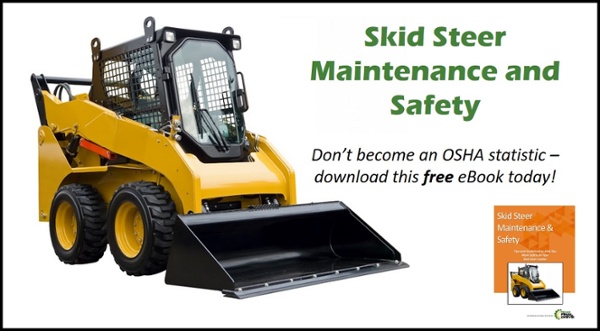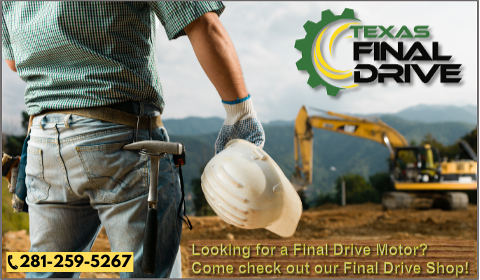A skid steer loader only takes a second to turn from a helpful tool into a deadly hazard. Compact and powerful, these machines are worksite essentials but also have serious risks. In 2024, multiple workers lost their lives in tragic skid steer accidents, each one a stark reminder of how quickly things can go wrong.

This blog post explores eight fatal skid steer incidents reported to OSHA in 2024, including rollovers, crushing injuries, and drownings. By examining these real-world tragedies, we aim to highlight standard danger zones and offer insights into how such accidents can be prevented in the future. Whether you're an operator, supervisor, or safety manager, understanding these risks is the first step toward making your job site safer.
Here are some other blog posts you might find helpful:
- Safe Hydraulic System Maintenance Practices You Should Follow
- Skid Steer Safety and Lift Arms
- Man Killed in Bobcat Skid Steer Loader Accident
- Unusual Excavator Accidents
Skid Steer Loader Safety: An Ongoing Concern
Skid steer loaders’ small footprint and versatile attachments make them indispensable on construction sites, farms, landscaping jobs, and industrial facilities. But with that versatility comes a hidden danger: skid steers can become lethal if not used properly.
According to the Occupational Safety and Health Administration (OSHA), skid steer loaders are associated with a significant number of serious injuries and fatalities each year. Common hazards include being crushed by moving parts, struck by attachments, pinned between the machine and another object, or caught in a rollover. OSHA’s guidelines on skid steer safety emphasize the importance of training, proper maintenance, and safe operating practices to minimize these risks.
Operators face danger zones, and the lift arms and bucket areas are responsible for the majority of fatal injuries. The National Institute for Occupational Safety and Health (NIOSH) also highlights visibility as a critical concern, as operators often have limited sightlines, especially when backing up or operating in confined areas.
In addition to technical hazards, many accidents stem from behavioral and situational factors. These include bypassing safety features, working too close to pond edges or unstable terrain, and improperly exiting or entering the machine while it's still running.
Many of these accidents are entirely preventable by understanding the risks and following safety protocols. OSHA recommends employers provide ongoing training, enforce lockout/tagout procedures during maintenance, and ensure all safety interlocks and protective devices are functioning properly. For operators, the key takeaway is simple but vital: never get complacent and always respect the machine.
Fatal Accidents Involving Skid Steer Loaders in 2024

What follows are summaries taken from abstracts of skid steer loader accidents that resulted in death. They are a somber reminder of why we should all make efforts to operate our equipment safely.
- Accident ID: 169117.015 – Skid Steer Overturn Fatality
On July 21, 2024, at 5:45 a.m., an employee operating a skid steer for a highway construction contractor veered off the road, causing the equipment to overturn. The employee suffered fatal head trauma upon impact with the skid steer's interior wall.
- Accident ID: 167878.015 – Skid Steer Rollover at Mine Site
At 10:00 a.m. on June 25, 2024, an employee was operating a Bobcat skid steer to widen a road at an abandoned mine facility. While clearing a washout area, the skid steer rolled over a steep hill. The employee sustained a separated spinal cord and was pronounced dead at the scene.
- Accident ID: 167464.015 – Crushed by Skid Steer Loader Arm
On June 14, 2024, at 6:09 p.m., an employee was killed when crushed by the arm of a skid steer loader. He was attempting to free a skid steer that had gotten trapped on soft dirt. He reached into the cab while standing between the bucket and the front of the cab. Pressing the pedal controlling the bucket, which moved the bucket toward the cab. Sadly, the loader arm crushed him against the cab, leading to fatal crushing head and chest injuries.
- Accident ID: 167141.015 – Bobcat Overturns into Pond
On June 4, 2024, an employee died from drowning when a Bobcat overturned into a pond after getting too close to the pond’s wall. It occurred as the crew was leveling ground near a retention pound near the 18th hole of a golf course.
- Accident ID: 166550.015 – Fall from Skid Steer
On May 1, 2024, at 8:15 a.m., an employee standing on the back of a skid steer to counterbalance it fell when the tail end suddenly lowered. The employee fractured the left fibula near the ankle and was found unresponsive. Emergency services were called, but the employee was pronounced dead at the scene.
- Accident ID: 165256.015 – Struck by Tree
At midnight on March 25, 2024, Employee #1 was cutting tree logs into 16-foot, 6-inch lengths, assisted by two coworkers. One measured downed trees, while the other operated a skid steer to move cut pieces. As Employee #1 used a STIHL MS 311 chainsaw to cut the base of a downed tree (19 inches in diameter), the owner used a Link-Belt 4300Q excavator to push down an 85-foot, 21-inch diameter tree. The falling tree struck and pinned Employee #1, who was then killed when a second tree, also pushed down by the owner, fell on top of the first.
- Accident ID: 164179.015 – Run Over by Skid Steer Loader
At 5:45 p.m. on February 16, 2024, an employee got trapped in mud while trying to walk through it. The nearby skid steer loader operator did not see them and accidentally knocked them over and backed over them. Suffering head fractures, the employee was killed.
- Accident ID: 163868.015 – Skid Steer Drives into Pond
On February 6, 2024, an operator drowned when a skid steer loader drove down an embankment into a pond. He failed to make it out of the cab.
OSHA Safety Recommendations for Skid Steer Loaders
 To address the serious risks associated with skid steer loaders, both OSHA and NIOSH have issued clear safety guidelines to protect workers and prevent fatal accidents. These recommendations are designed for both employers and equipment operators and focus on proper use, maintenance, and training.
To address the serious risks associated with skid steer loaders, both OSHA and NIOSH have issued clear safety guidelines to protect workers and prevent fatal accidents. These recommendations are designed for both employers and equipment operators and focus on proper use, maintenance, and training.
Operator Training and Certification—Before using a skid steer loader, operators must be thoroughly trained and competent. OSHA recommends that training include equipment controls and functions, safe operating procedures, recognizing and avoiding hazards, and emergency shutdown protocols.Training should also be specific to the worksite conditions and updated regularly.
Keep Safety Interlocks Functional—Skid steers are equipped with interlocks designed to prevent movement of the arms and bucket when the operator is not seated. OSHA stresses the importance of never bypassing these safety systems. Tampering with or disabling them not only violates safety regulations but can also directly lead to fatal injuries.
Maintain Visibility—Operators must always ensure clear visibility before moving the machine. Use mirrors, backup alarms, and, when available, cameras. OSHA also advises employers to restrict ground personnel from walking behind or beside a moving skid steer.
Use Seatbelts and ROPS—Rollovers are among the deadliest skid steer accidents. OSHA recommends the consistent use of seatbelts to keep operators inside the protective zone in the event of a rollover and ROPS (Roll-Over Protective Structures) to maintain a safe space around the operator during an overturn. Note that these features are only effective when used together.
Avoid Exiting with the Engine On—Operators should never exit a skid steer while the engine is running or the lift arms are raised. OSHA highlights numerous fatalities that occurred when workers tried to leave the machine without shutting it down, often resulting in crushing injuries.
Perform Regular Inspections and Maintenance—Skid steers should be inspected daily for mechanical issues or hydraulic leaks. OSHA emphasizes preventative maintenance and logging of all repairs to ensure machinery remains in safe operating condition.
Be Cautious with Attachments—Attachments such as buckets, augers, and forks can shift unexpectedly or create new danger zones. OSHA recommends locking attachments securely, verifying compatibility, and operating within load capacity limits.
Conclusion
The tragic skid steer loader fatalities reported in 2024 serve as sobering reminders of the dangers of operating this essential piece of equipment. From rollovers and crushing incidents to drownings and falls, each case underscores the critical importance of safety awareness, proper training, and strict adherence to OSHA guidelines.
Most of these accidents could have been prevented through basic precautions—using seatbelts, avoiding unsafe terrain, respecting danger zones around the bucket and arms, and never bypassing safety interlocks. Whether you're an operator, supervisor, or employer, these stories highlight why safety must always come first.
Skid steers are powerful tools—but they’re not forgiving. Every time you step into one, make safety your top priority. The life you save could be your own or that of a coworker.
Data source: Data Catalog, Osha_Accident_Abstract


